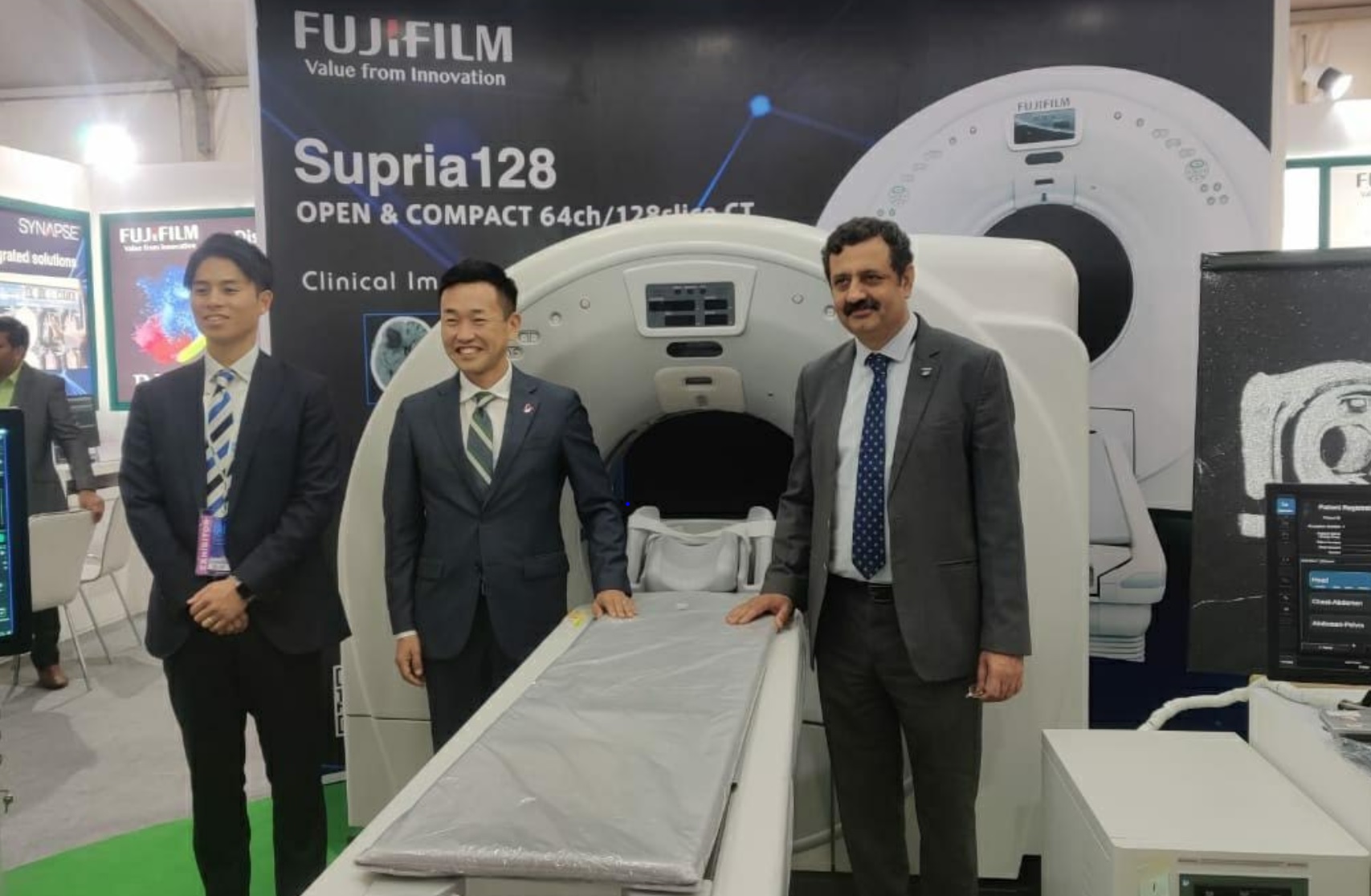As India strives to provide quality healthcare to its 1.4 billion people, Japanese companies are supporting local services, from mobile clinics in rural areas to hospitals in big cities.
On March 15, hundreds of people, from young mothers to elderly adults, gathered in a colony in the state of Kerala to receive tuberculosis tests at Fujifilm’s mobile clinic.
Tuberculosis is a major health threat to the indigenous people living in the region, deep in the mountains near the Bengal Tiger Reserve. The disease infects about 10 million people worldwide each year and kills about 1.5 million, making it one of the most important global health threats, along with malaria and AIDS. About 500,000 people die from it in India alone. A clinic in Kerala had a portable X-ray machine developed by Fujifilm. Weighing only 3.5 kilogrammes, it is easy to transport in a small car. Battery power allows the machine to be used even in places without electricity.
“Working with government officials and other partners, we have taken the clinic to 30 locations in 14 states and performed chest X-rays on more than 12,000 people over the past two years,” said Shunsuke Honda, who heads Fujifilm’s medical division in India. . . . Fujifilm’s machine has an AI-powered diagnostic system that can examine suspicious findings on the spot. The doctor then makes an official diagnosis. So far, at least 125 patients have been diagnosed with tuberculosis and given treatment options.
Early detection is key in the fight against infectious diseases such as tuberculosis, both to treat them and prevent their spread.
“Hospitals with X-ray equipment are located far from the population,” said Sindhu, a disease control official in Kerala. “Using Fujifilm’s technology to detect tuberculosis near residents’ homes is a big step towards eradicating the disease.”
India is Fujifilm’s fifth largest market for medical devices after Japan, the US, Europe and China. The company runs the clinics free of charge as part of its charity. But it hopes they will help build trust with local stakeholders to “increase brand awareness and strengthen our business base,” Honda said.
With 1.4 billion inhabitants, India is now considered the most populous country in the world, ahead of China. Yet its “healthy life expectancy” – how long a person can expect to live in good health – is barely past 60. And many, especially in rural areas, have limited access to medical care. India is working on this under Prime Minister Narendra Modi’s national health program Ayushman Bharat. The goal is to expand insurance coverage for poor people and establish 160,000 health centers nationwide.

Many Indians also lack access to basic health information, such as the fact that excessive drinking and smoking can harm them. The government has appointed community workers called Accredited Social Health Activists, or ASHAs, to educate the local population on such issues.
These workers could be seen explaining X-rays and their results to the attendees in the settlement clinic. India wants to promote related domestic industries as well. The country is a generic drug manufacturing powerhouse. But it relies heavily on imported medical equipment, and the government offers subsidies to encourage domestic production. American and European companies are already actively investing in the country.
General Electric built a plant in Bengaluru through a joint venture with Wipro, an Indian technology services company, to manufacture equipment such as CT scanners. Philips has expanded its medical device factory in Maharashtra and is building a new research and development center in India.
Siemens Healthiners has signed a memorandum of understanding with a government-backed research institute to develop MRI technology. In 2021, the company acquired Varian Medical Systems, which owns a large share of oncology devices in India and China, and is accelerating its push into emerging markets.
Faced with intense competition, some Japanese companies are instead focusing on other related fields, such as hospital management.
Sakra World Hospital was opened in Bengaluru in 2014 as a joint venture between Secom Medical System and Toyota Tsusho. After an initial struggle to attract patients, it became very popular thanks to Japanese and Indian know-how.
The main attraction is the rehabilitation centre, which concentrates many patients in one large room, an approach that was new in India.
Patients come from all over the world. An Indian man who was in a rehabilitation centre in mid-March said he had just returned home after a car accident in the UK. He did not find a suitable place for himself in Europe.
Many also come from the Middle East, including the United Arab Emirates. Executive rooms, which cost 15,000 rupees ($183) a night, are the first to be filled, according to the hospital.
“There are many Indian doctors in the Middle East, so many people in the region see it as a natural choice to receive treatment in India,” said Sakra CEO Yuichi Nagano.
The hospital currently has 308 beds and more than 200 doctors, and there is no more room for expansion. But it handles about 900 to 1,100 surgeries a month—significantly more than a hospital of the same size in Japan.
As the Indian economy grows, the demand for advanced medical care is expected to increase. With this trend in mind, Sakra is considering adding a second or even third facility.
“We want to actively use new types of services in our new hospitals, such as radiation therapy for cancer,” Nagano said.




